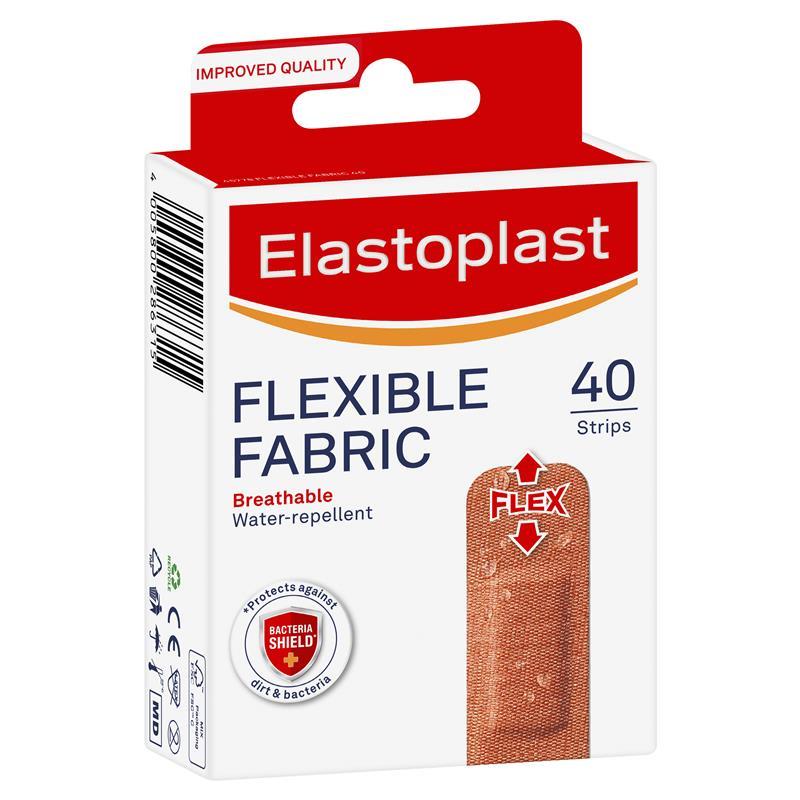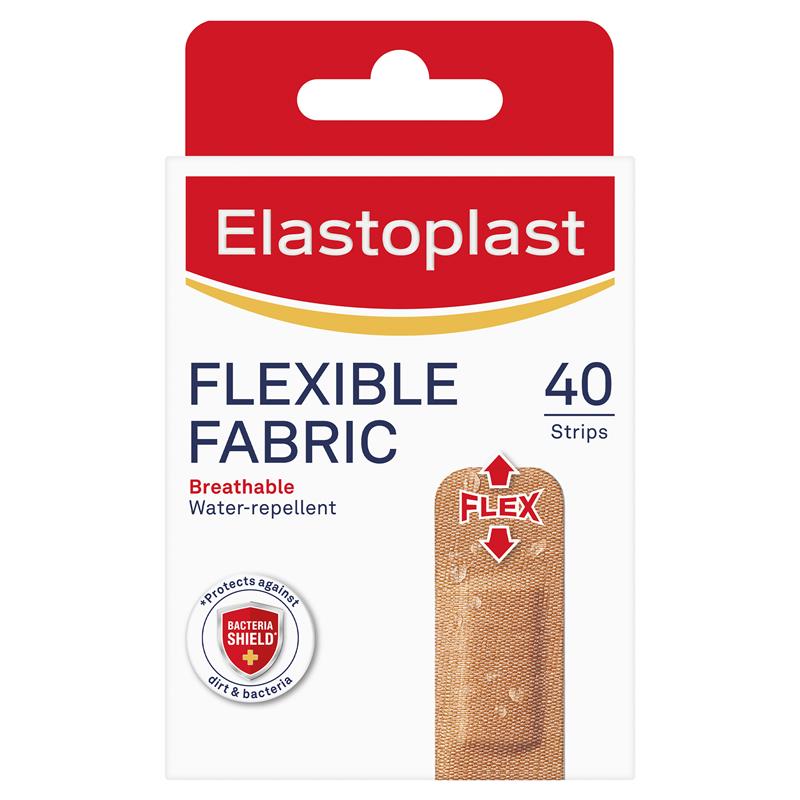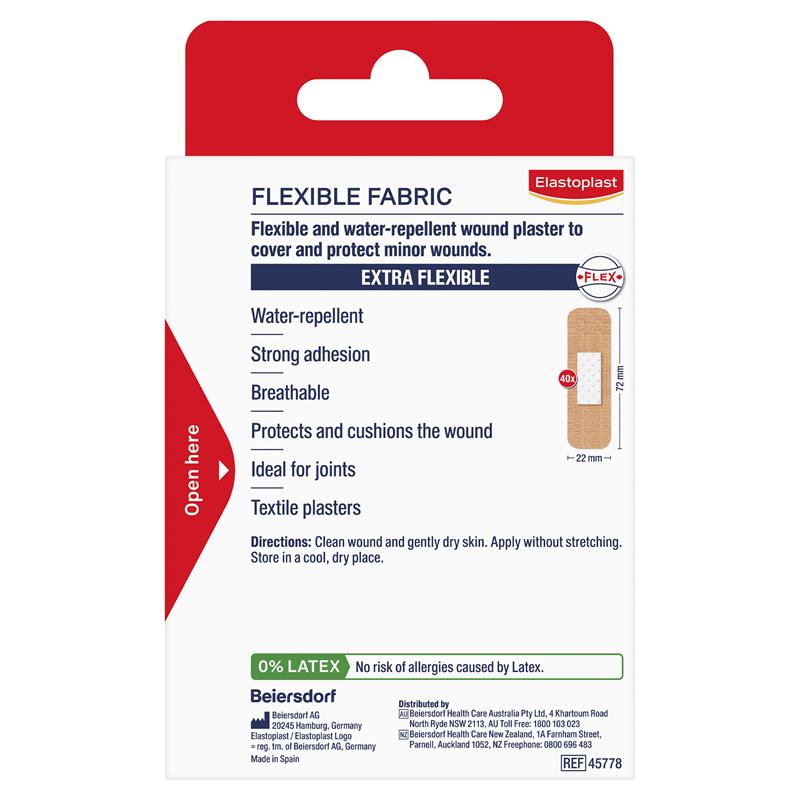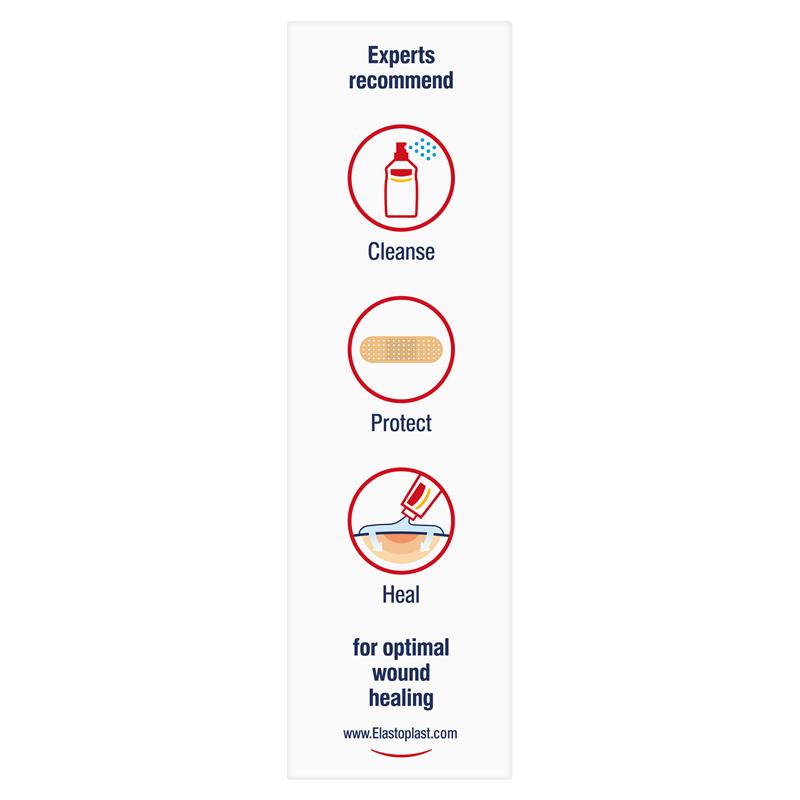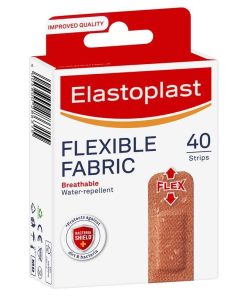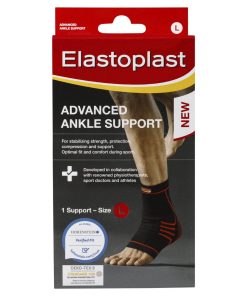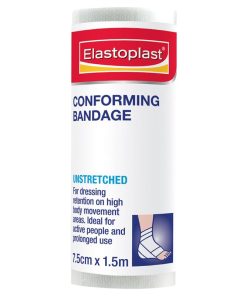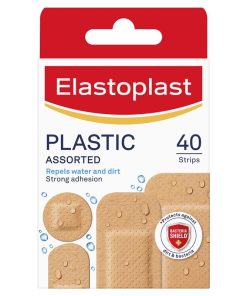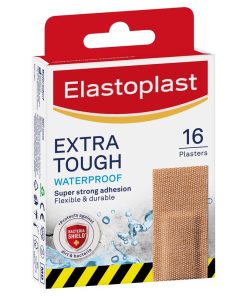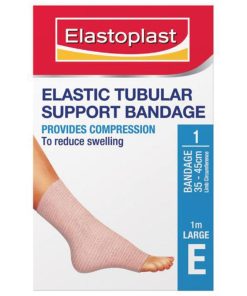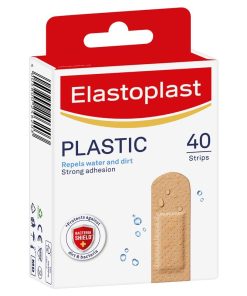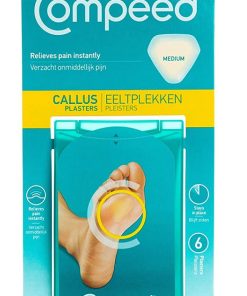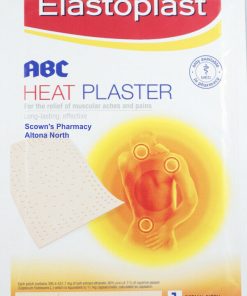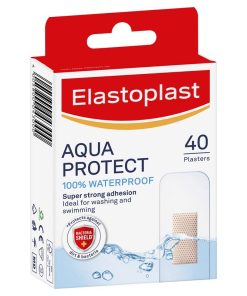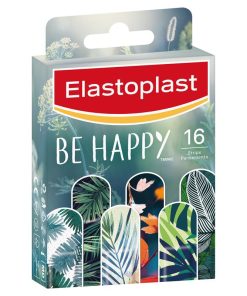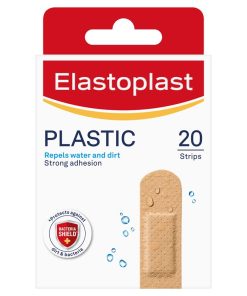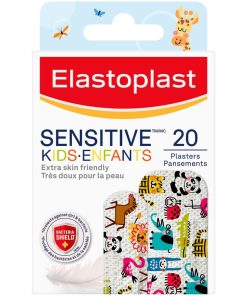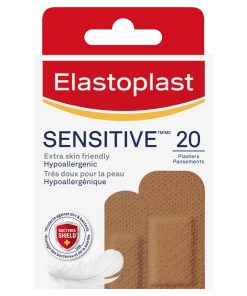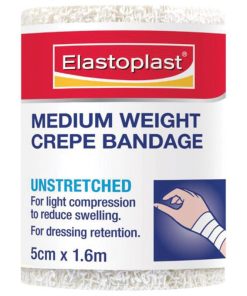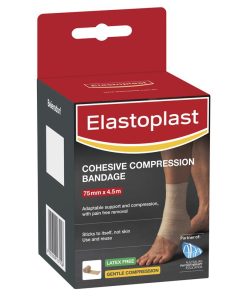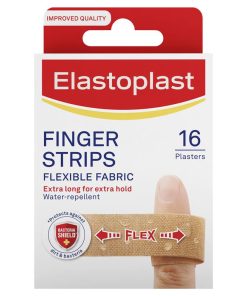Elastoplast Flexible Fabric Strips 40 Pack Elastoplast
$ 6,95 $ 4,17
Elastoplast Flexible Fabric Strips – covers and protects minor, everyday wounds.
Elastoplast Flexible Fabric is breathable and water-repellent. Protects against dirt and bacteria. Flexible and water-repellent wound plasters to cover and protect minor wounds.
FEATURES
- Strong adhesion
- Extra flexible
- Breathable material
- Water-repellent
- Protects and cushions the wound
- Ideal for joints
- Textile plasters
DETAILS
Elastoplast Flexible Fabric plasters are suitable for covering all types of smaller wounds. Elastoplast plasters block 99% of dirt and bacteria.
- The material stretches with the skin’s movements.
- The non-stick woundpad protects and cushions the wound.
- The strong adhesion ensures that the plaster stays in place.
The plasters are available:
- As strips in different sizes which seal all around the wound.
- As dressing length which can be cut to the ideal size.
DIRECTION
1. Cleanse
Cleansing the wound from dirt and bacteria is an essential first step to enable optimal healing. To prevent wound infections, spray the Elastoplast Wound Spray from a distance of approximately 10 cm onto the entire wound area. Repeat if necessary, then gently dry the wound and surrounding skin area.
Important: A minor wound will soon stop bleeding. If it continues, apply pressure with a gauze pad or Non-Stick Dressing, keep pressure on the wound and seek medical advice.
2. Protect
Next, it’s important to protect the wound from external influences like dirt and bacteria to enable undisturbed healing. Cover your wound with the Elastoplast plaster or dressing that best suits your needs. Observe your wound and change the plaster or dressing regularly unless you’ve been recommended to do otherwise by your doctor. You might find this wound dressing know-how article useful.
3. Heal
Help your wound heal up to 2x faster and with a lower risk of scarring. Apply Elastoplast Wound Healing Ointment regularly until your wound has healed completely. Carefully apply a thin film one to two times per day. Make sure the opening of the tube does not get in contact with your wound. Repeat regularly until the healing is completed. The Elastoplast Wound Healing Ointment can be used on open minor superficial wounds and at any stage of the healing process. If necessary, cover the wound with a plaster or dressing.
PACKAGING SIZE
| Product | Size> | Quantity |
| Flexible Fabric 1m x 6cm (dressing length) | 10cm x 6cm | 10 Pieces |
| Flexible Fabric | 72 x 22mm | 20 Strips |
| 20 Strips | ||
| Flexible Fabric | 72 x 22mm | 40 Strips |
| 40 Strips | ||
| Flexible Fabric | 72 x 22mm | 100 Strips |
| 100 Strips |
INGREDIENT
- Backing: Viscose, Polyamide
- Adhesive: Synthetic Rubber
- Wound Pad: Polypropylene
- Release Liner: Paper with silicone coating
WARNING
Always read the label. Follow directions for use. If symptoms persist talk to your healthcare professional. This medicine may not be right for you. Read the warnings before purchase. The pharmacist reserves the right to not supply contrary to our professional and ethical obligation.
FREQUENTLY ASKED QUESTIONS
1. How often should I change my plaster?
Usually, it is recommended to change standard first aid dressings daily due to hygienic reasons. Some advanced plasters such as the Fast Healing Plaster that provide moist wound healing conditions are recommended to be left in place for up to two days or more in order not to interrupt the healing process.
2. Is it better to let small wounds dry at the fresh air instead of putting on a plaster?
It is one of the wound care myths that keeping minor cuts and grazes uncovered and let air to them helps them to heal faster. The contrary is true! Research shows that covered wounds heal more efficiently and have a reduced risk of infection. Elastoplast products provide protection until the wound is completely healed.
3. When should I consult a doctor?
We recommend contacting a medical professional under the following circumstances:
- If the wound is deep and causing major bleeding
- If the wound shows signs of infection such as redness, warmth, pain and swelling
- If there are embedded foreign objects in it
- In the case of animal or human bites
- If the wound is in the area of the face
- If there is insufficient tetanus vaccination
- and of course always when you have questions or are uncertain.
4. What if my wound gets infected and suppurates?
You should contact a medical professional if you recognize signs of infection. This is not only the occurrence of pus but also swelling, redness, heat, pain, itching or burning. In case of infection the wound will need medical care and special medical treatment.
5. Which plaster should I use for my sensitive skin?
If you have very sensitive skin we recommend using the Elastoplast Sensitive or Sensitive Kids products. These plasters are especially developed for sensitive skin and are very skin friendly and hypoallergenic.
6. Which Elastoplast plaster are waterproof and water resistant?
The Elastoplast Aqua Protect and Aqua Protect XL/XXL strips as well as the Fast Healing Plasters are waterproof and will not go off while washing or showering. The Elastoplast Fabric range is water-repellent. The material keeps water on the surface where it beads off. All Elastoplast Water Resistant plasters as well as the Junior plasters are water-resistant.
7. Which plasters do you recommend for wounds on fingers?
For injuries and wounds on hands and fingers we recommend our special Elastoplast Fabric Finger Strips. These plasters are extra long so that they stick perfectly on fingers. Moreover we offer a special handset with three different plaster shapes to fit fingertips and knuckles.Flexible Fabric Strips
Quick Shipping and Professional Packaging
We provide a variety of shipping options due to our long-running partnerships with UPS, FedEx and DHL. Our warehouse staff will package all goods to our exacting requirements. Your goods are thoroughly checked and secured properly prior to shipping. We ship to thousands clients each day across multiple countries. This shows that we're committed to being the largest online retailer in the world. Both Europe and the USA have distribution and warehouse centres.
Note: Orders that include more than one item will be assigned a processing date depending on the item.
Prior to shipment, we will inspect thoroughly the items you've purchased. The majority of orders are shipped within 48 hours. The expected delivery time will be between 3-7 days.
Returns
We don't control the inventory in our factory and warehouse. This means that the actual stock could change at any time. Be aware that your order may be out of stock when the order has been placed.
Our policy is valid for 30 days. If you have passed 30 days in the past since you purchased and we are unable to offer you a refund or exchange.
The item cannot be used and in its original condition. It must also still be in the original package.
Related products
Braces & Sleeves
Bandages, Gauze & Dressings
Elastoplast Conforming Bandage Unstretched 7.5cm x 1.5m Elastoplast
Bandages, Gauze & Dressings
Elastoplast Crepe Bandage Medium Weight 10cm x 1.6m Elastoplast
Bandages, Gauze & Dressings
Bandages, Gauze & Dressings
Pain & Fever Relief
Elastoplast ABC Heat Plaster Relief of Muscular Aches & Pain Dermal Patch 22×14 Elastoplast
Braces & Sleeves
Bandages, Gauze & Dressings
Elastoplast Cohesive Compression Bandage 50mm x 4.5m Elastoplast
Blister Plaster
Cushioning Tape
Bandages, Gauze & Dressings
Bandages, Gauze & Dressings
Supports & Braces
Bandages, Gauze & Dressings
Elastoplast Crepe Bandage Medium Weight 5cm x 1.6m Elastoplast
Blister Plaster
Bandages, Gauze & Dressings
Bandages, Gauze & Dressings
Elastoplast Cohesive Compression Bandage 75mm x 4.5m Elastoplast
